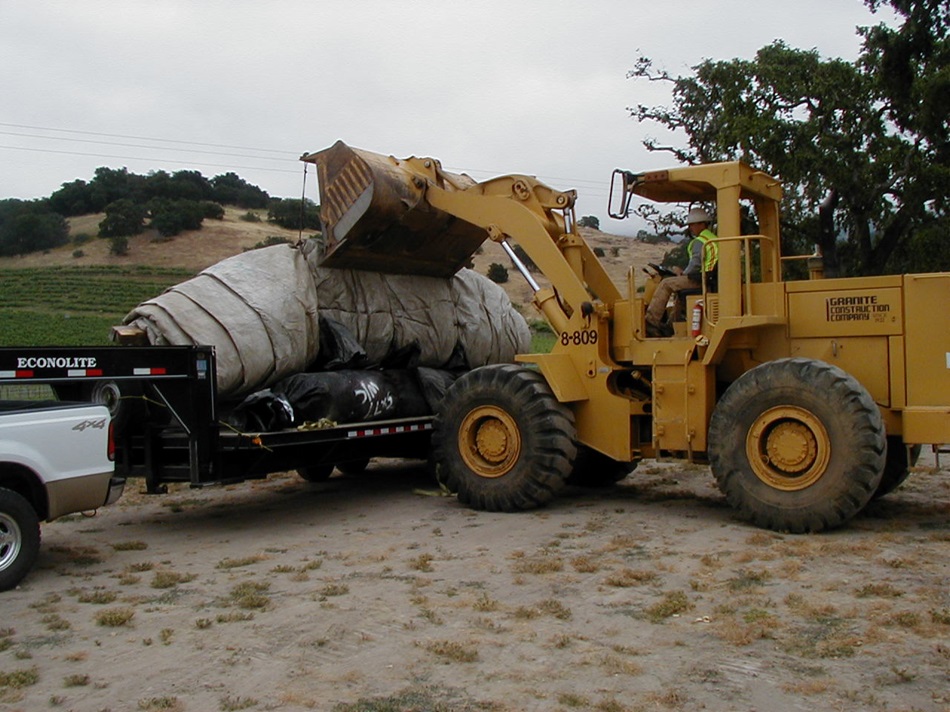
The AquaDam® is being removed from the trailer it was transported on.
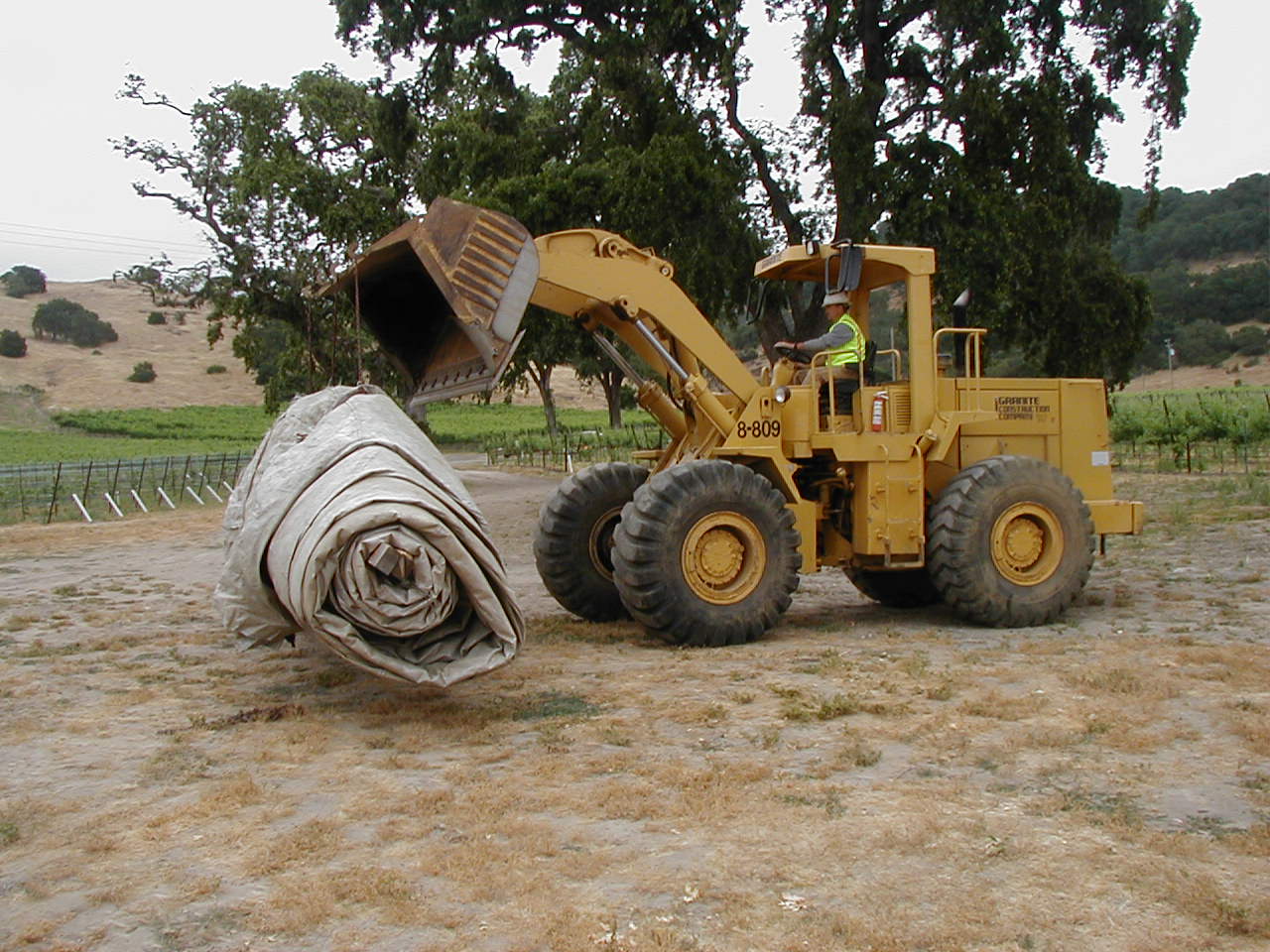
An AquaDam® has ropes wrapped around the unit with loops on the end. The loops are there to assist with lifting and maneuvering the AquaDam.
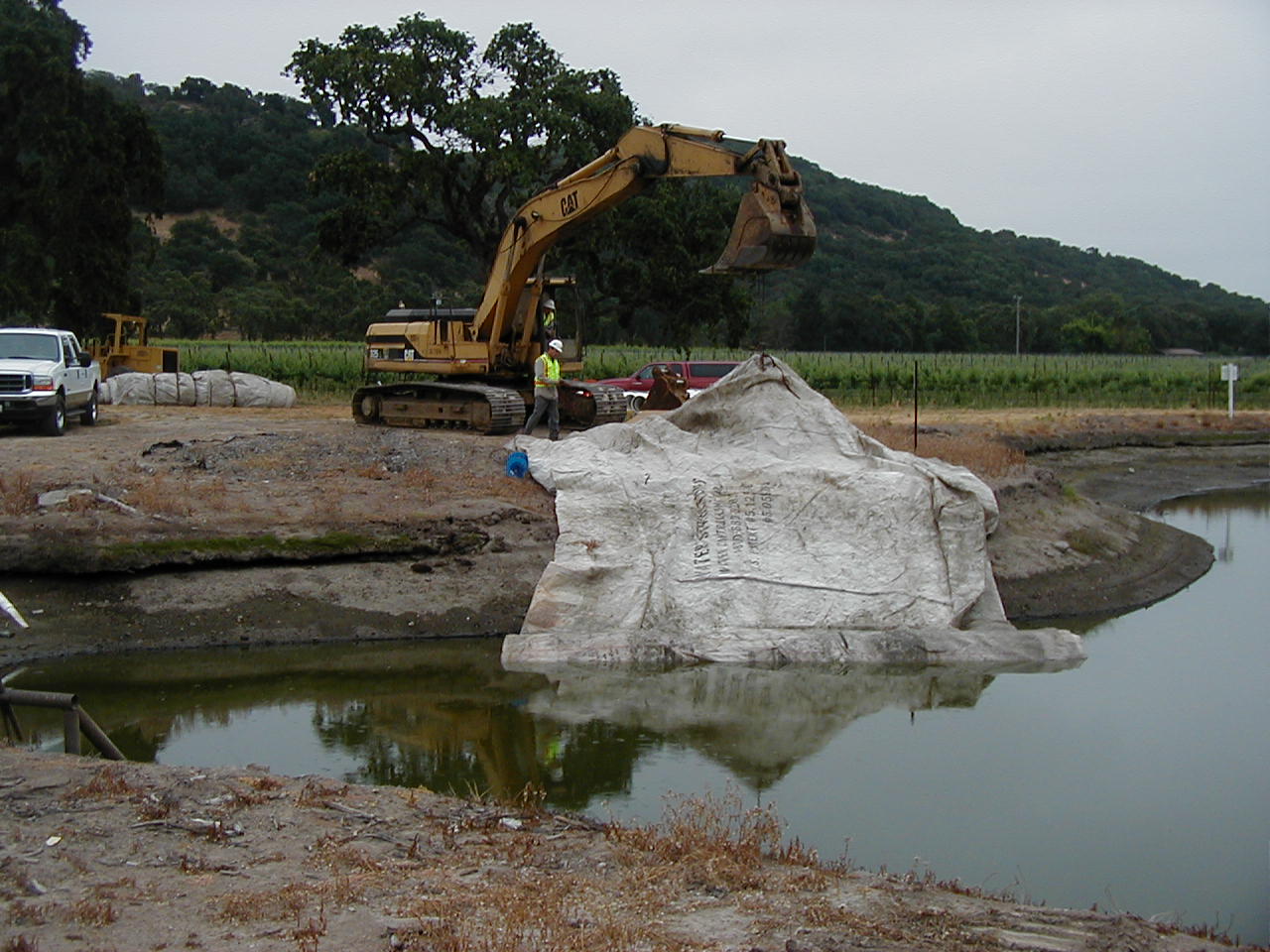
The AquaDam® has been set at the starting bank and then allowed to be rolled down into the pond. Now the AquaDam® is ready to be filled with water.
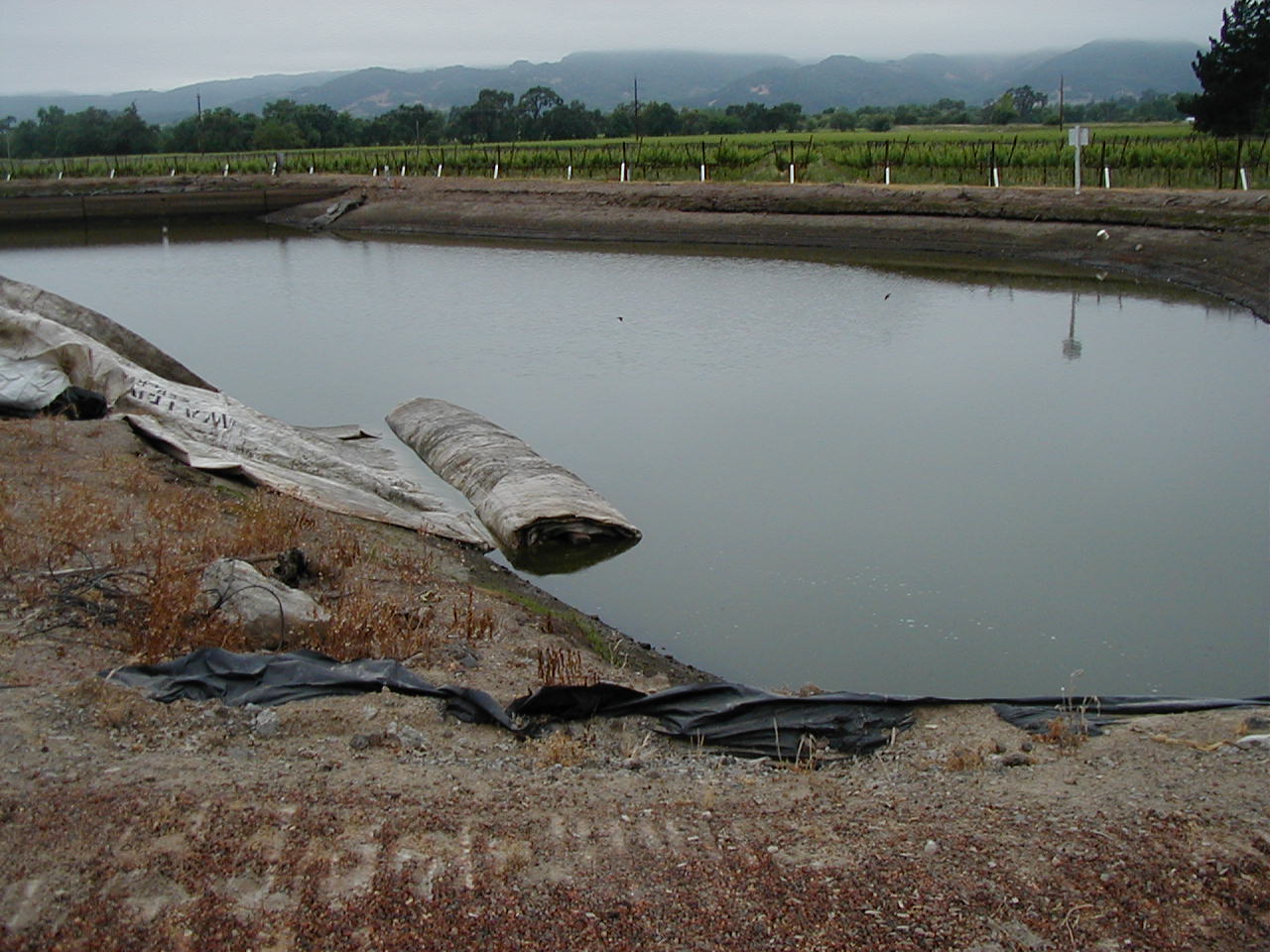
Another view of the AquaDam® rolled down the bank, ready to be filled with water.
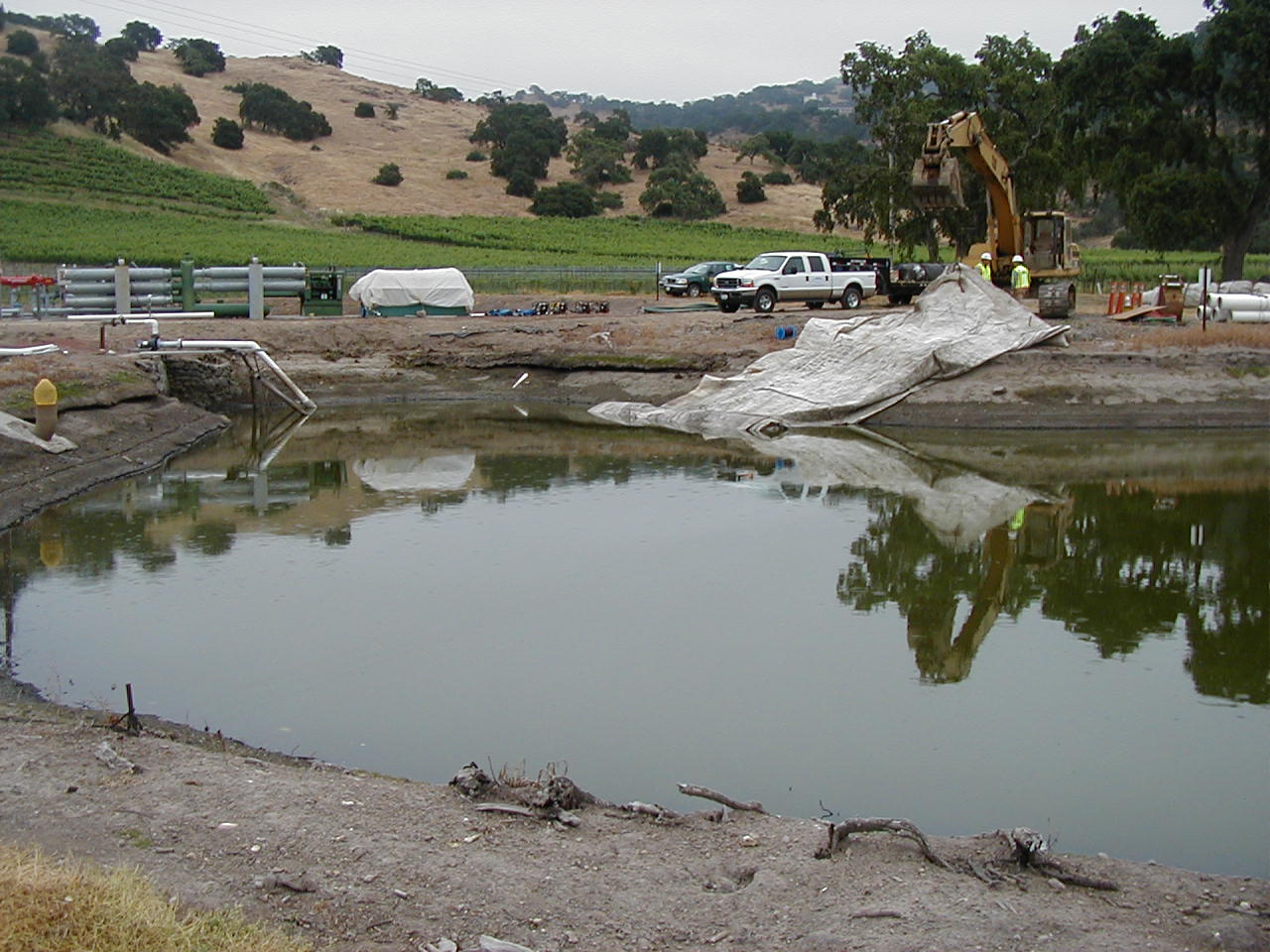
Now the AquaDam's fill-tubes can have discharge hoses placed inside them to fill the unit.
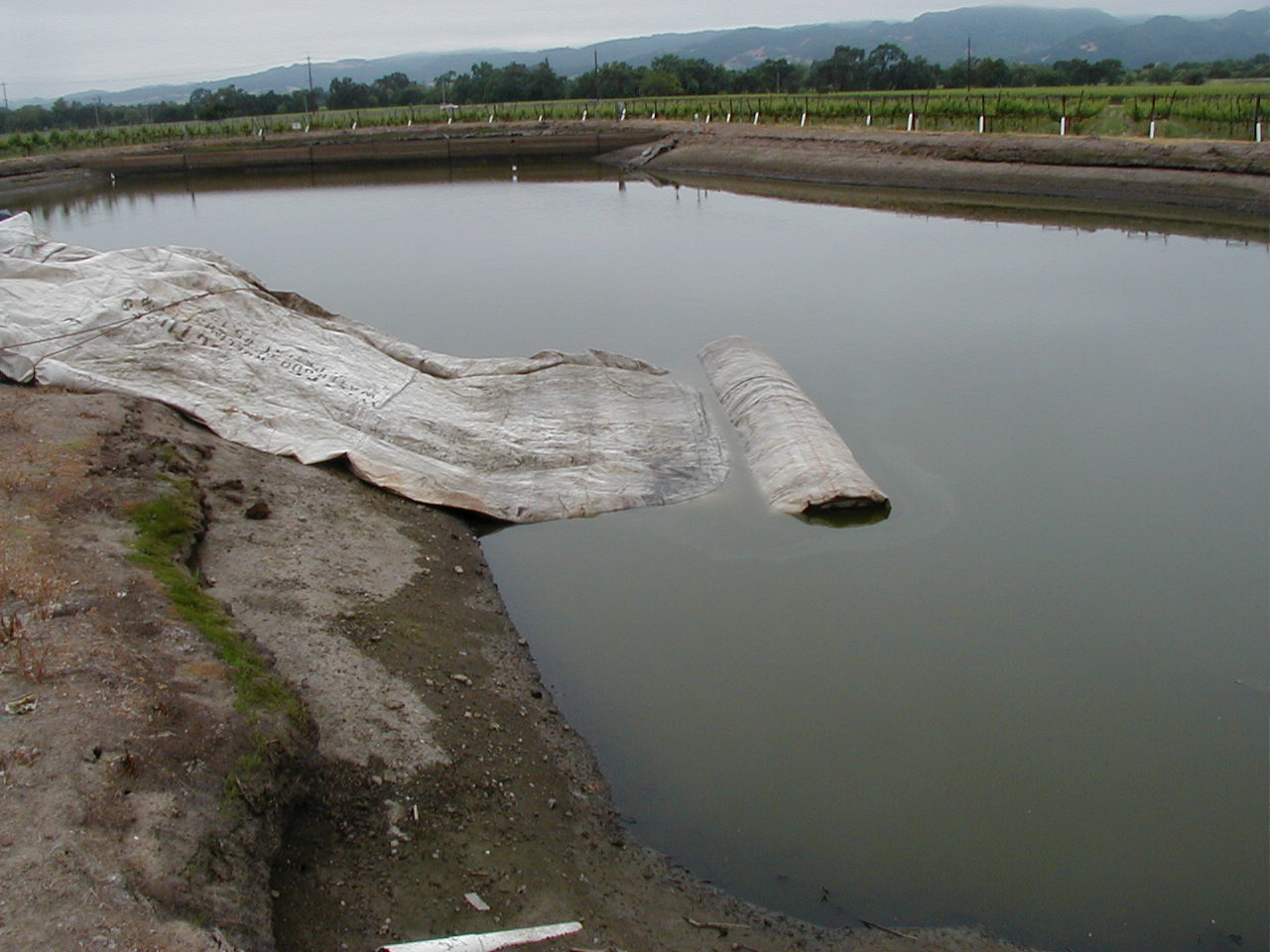
The AquaDam® is starting to fill with water.
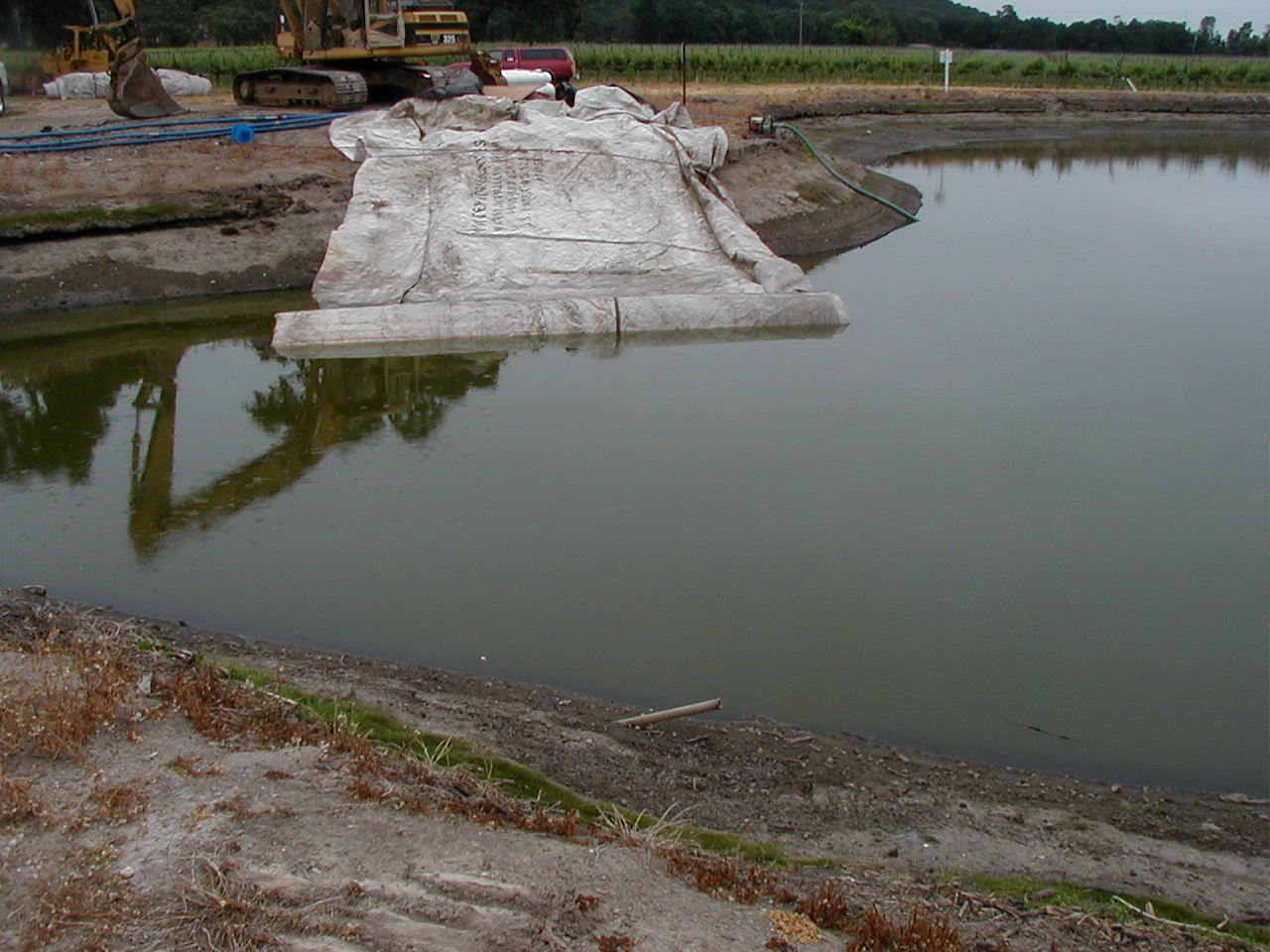
Here (from this angle) you can see the discharge hoses going into the fill-tubes to fill the AquaDam® with water.
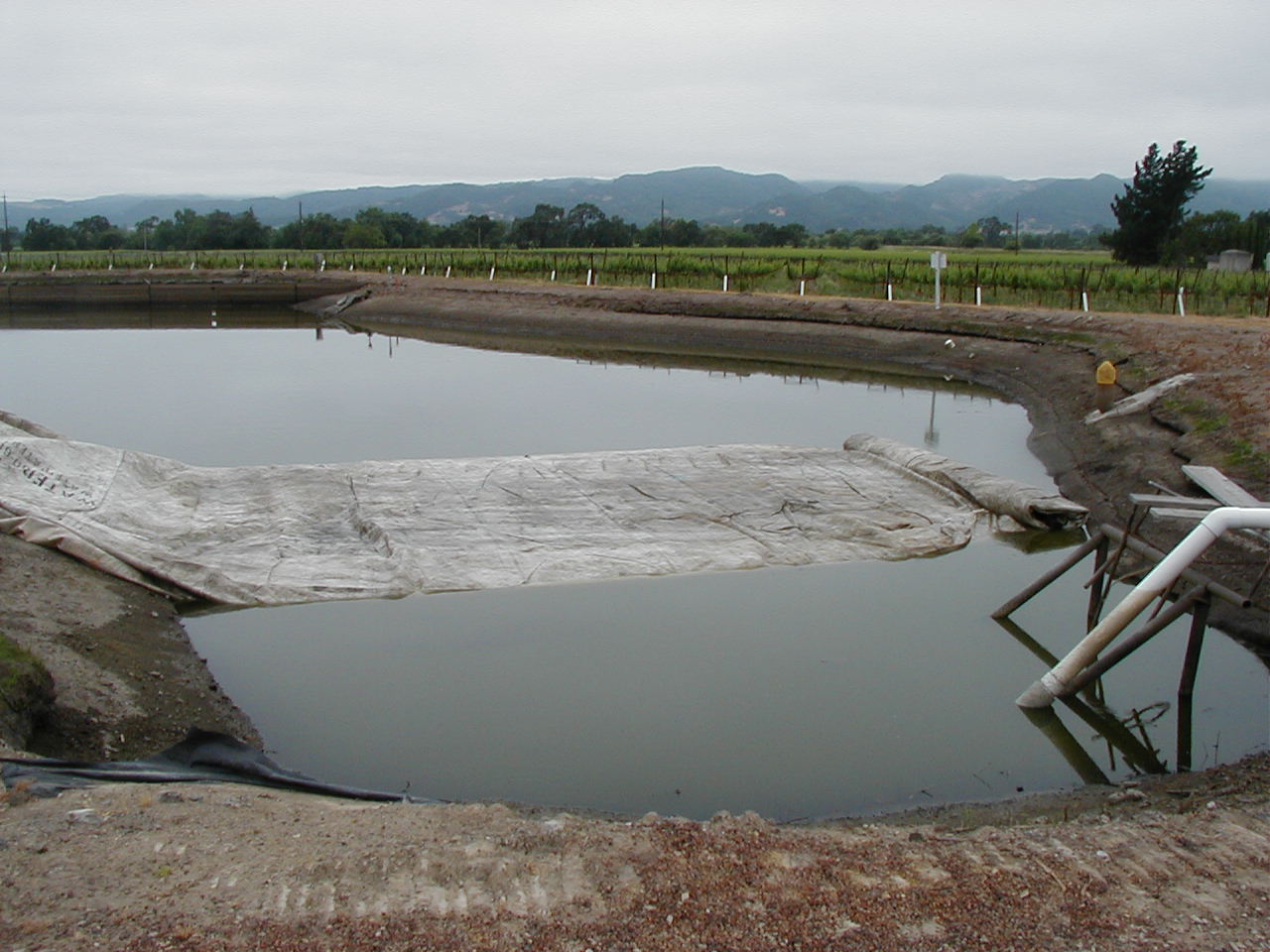
The AquaDam® has made it to the ending bank, but the end the AquaDam® must line up parallel with the waters edge so it can roll straight up the ending bank.
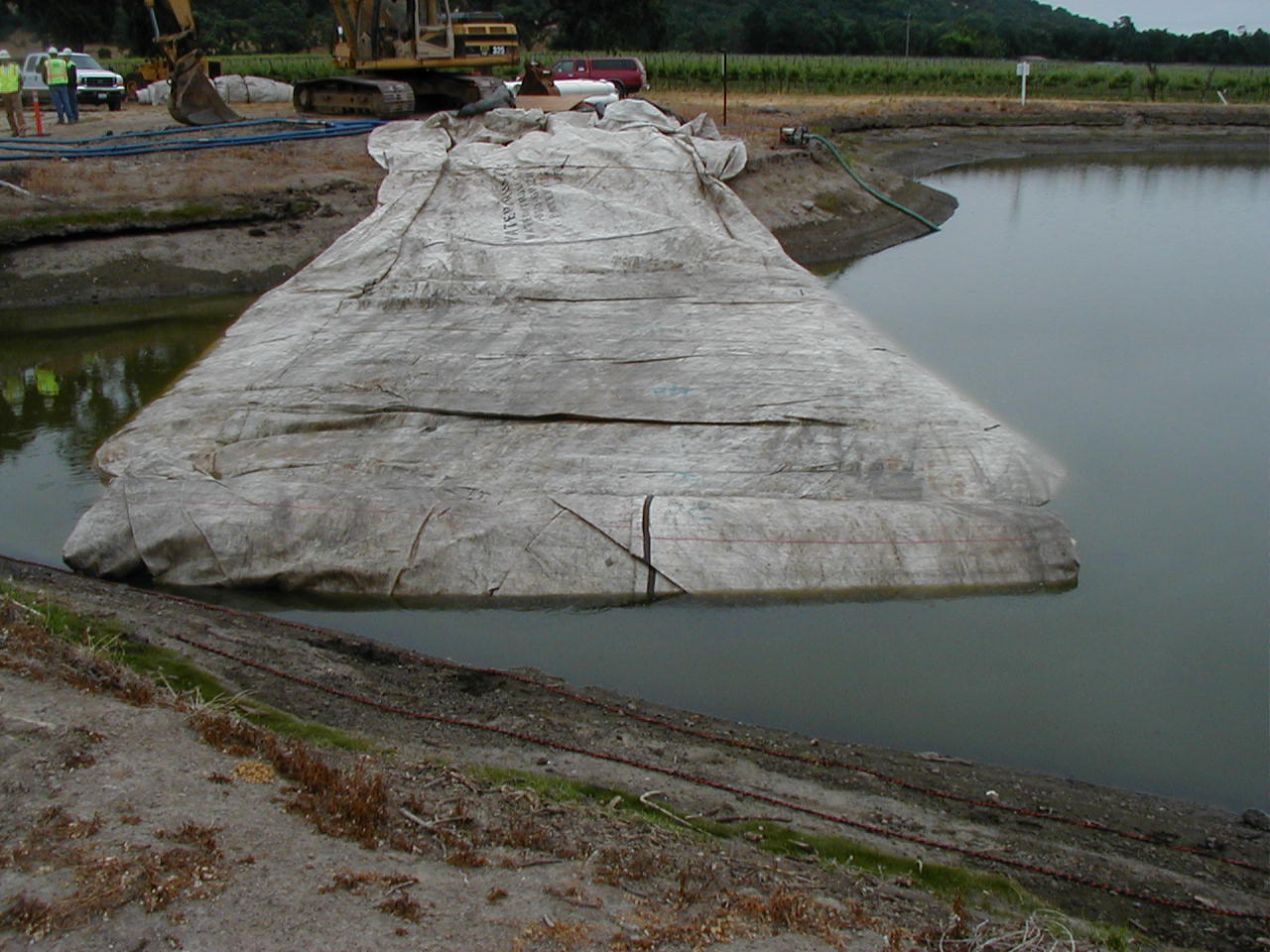
Notice the angle between the AquaDam® roll and the water's edge along the ending bank. The left side must be held idle until the right side can close the gap or the right end can be pulled and tied into the desired location.
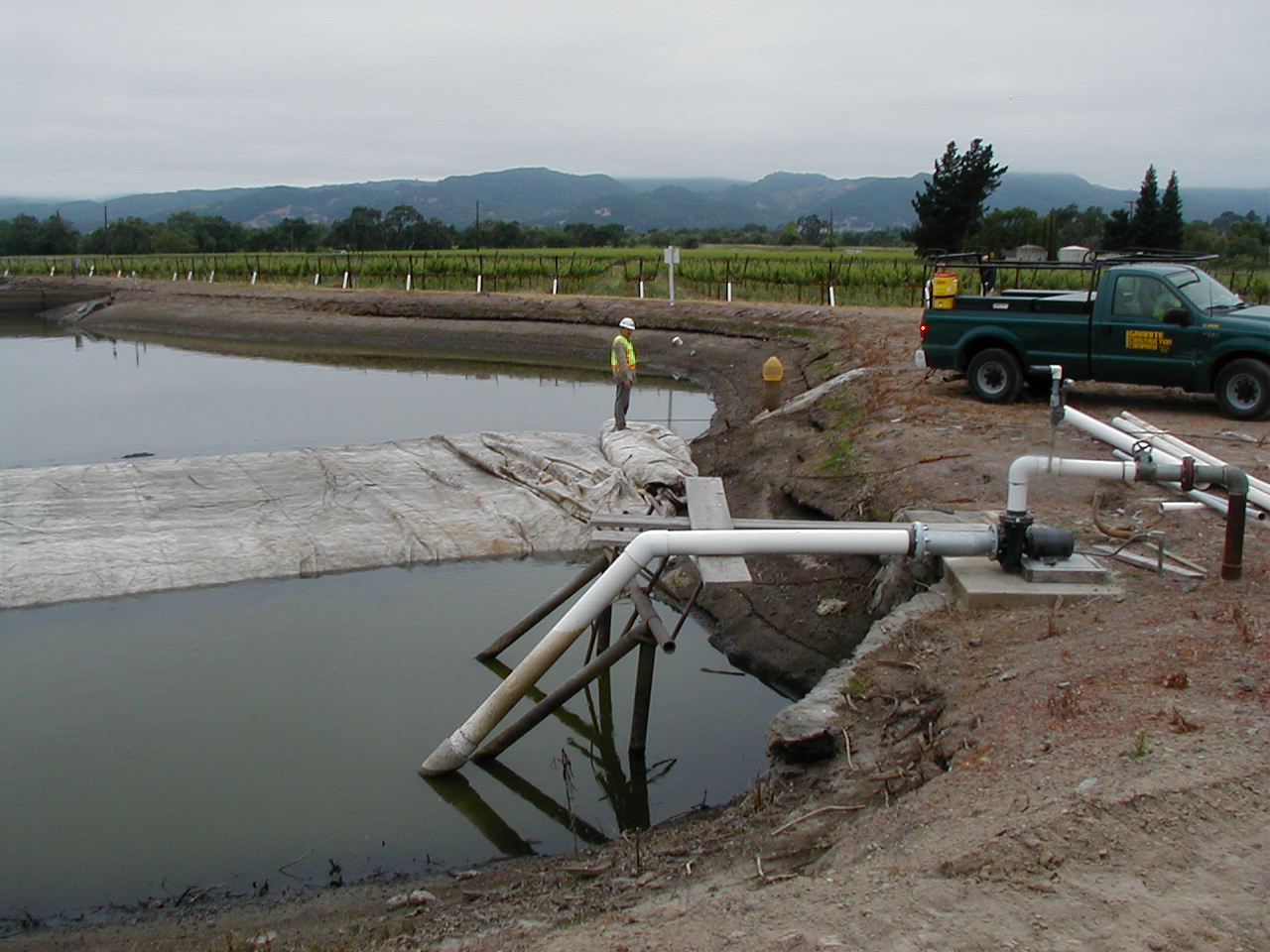
A rope has been used on the far side to close the gap seen in picture 9.
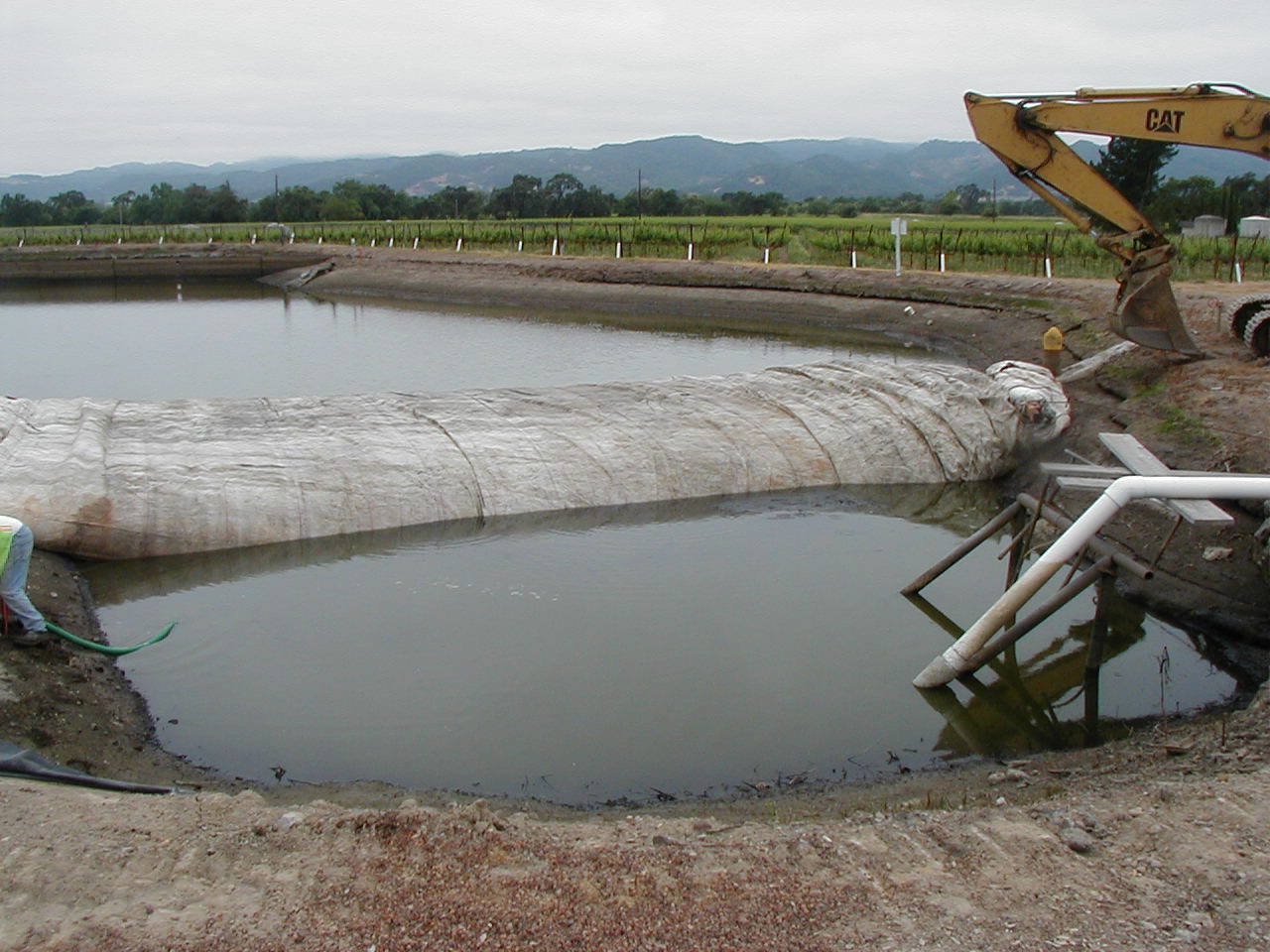
An excavator was needed to help pull the end of the AquaDam® up the ending bank to the desired location.
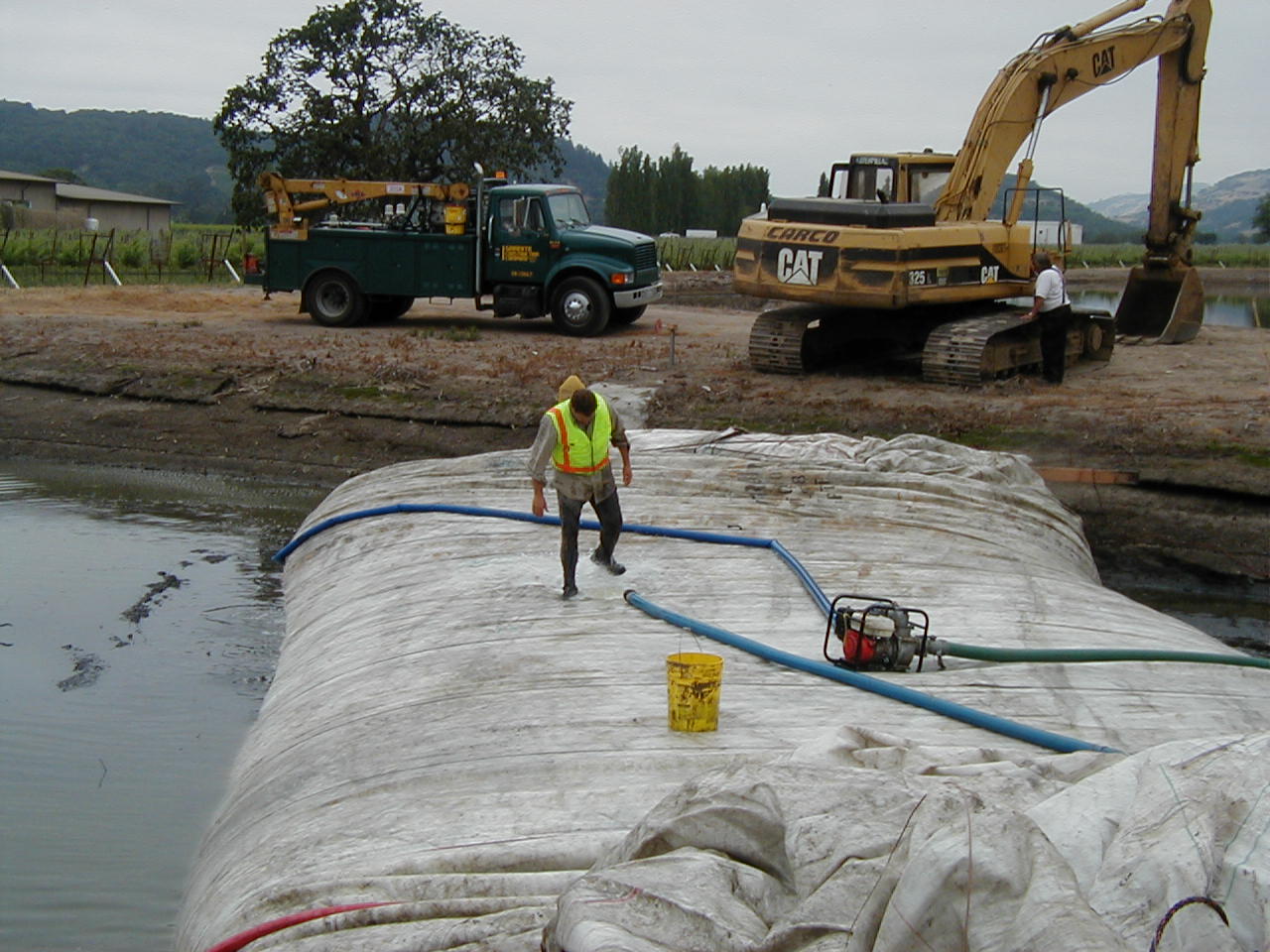
Now that the AquaDam® has been filled and tied off, the work area is being dewatered.
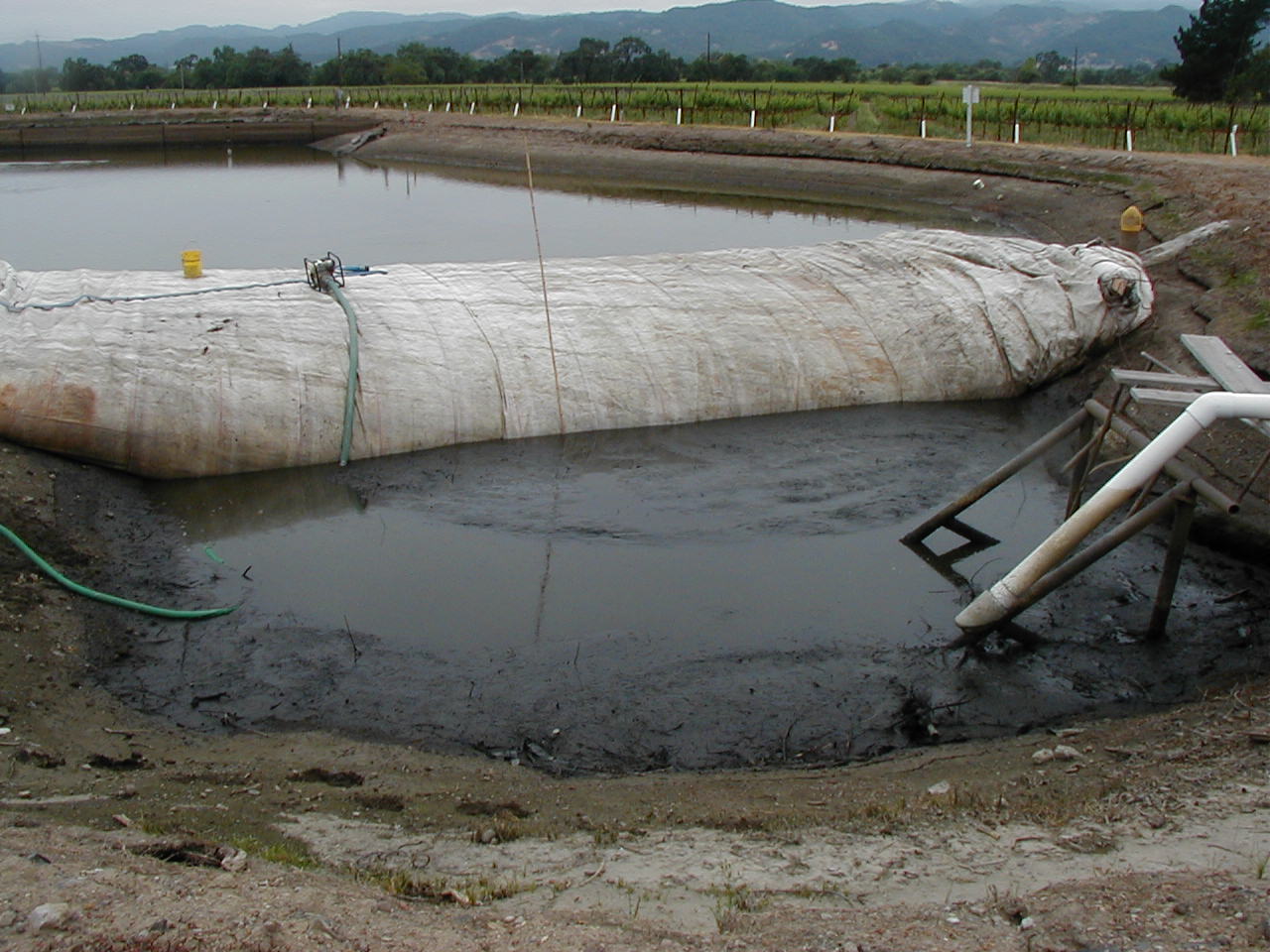
The work area is almost dewatered and the AquaDam® is doing a great job.
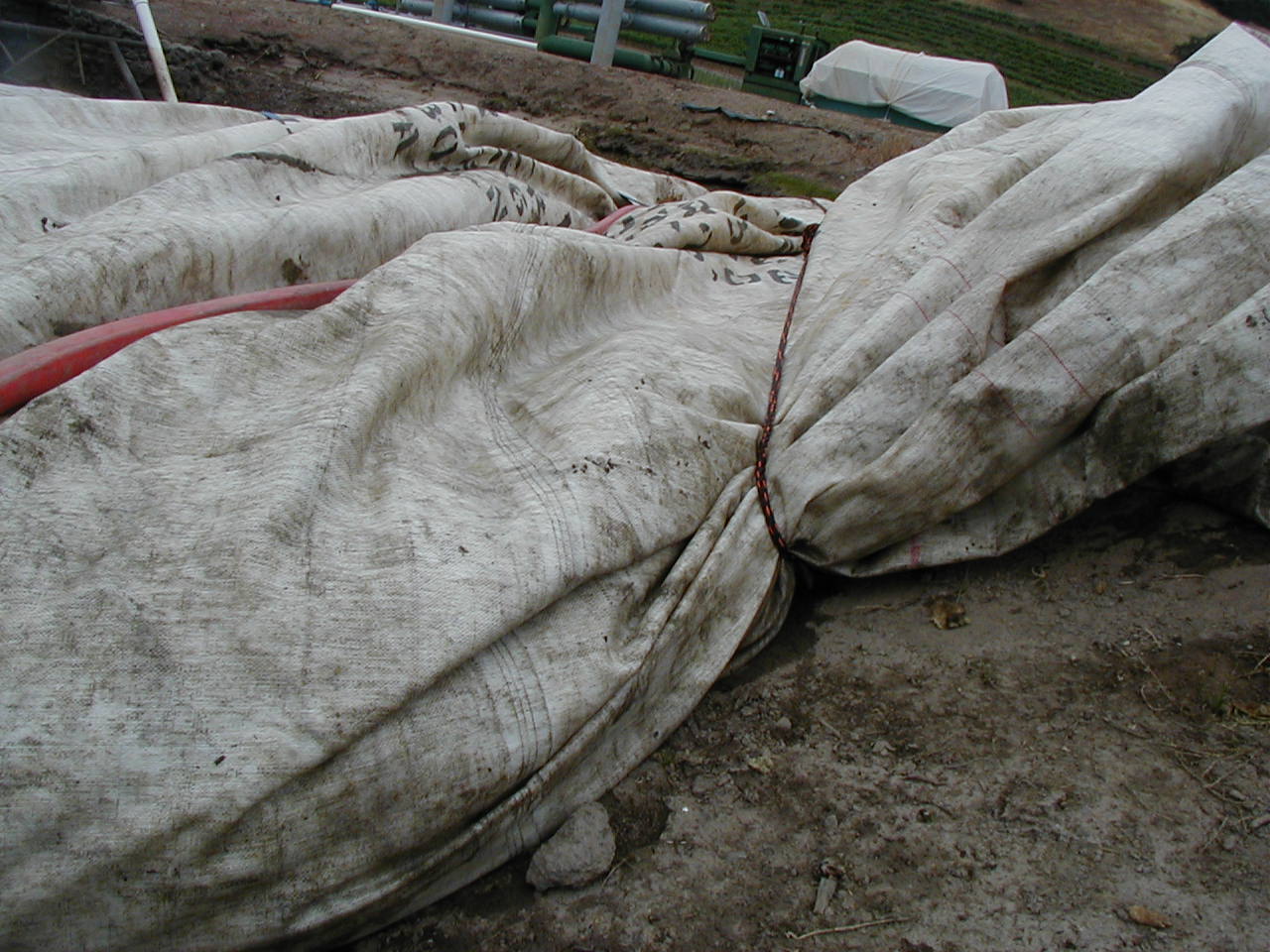
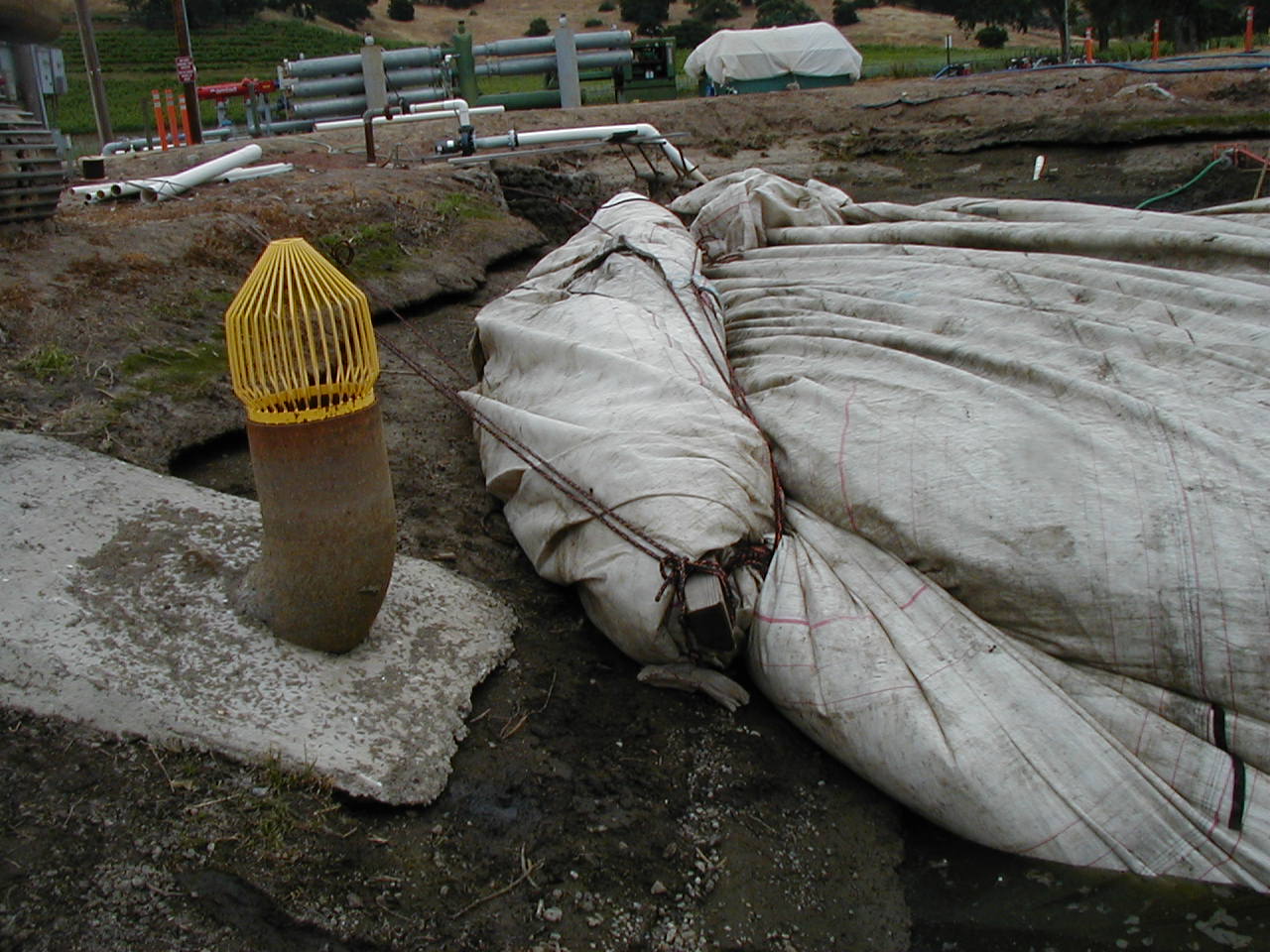
Here we can see the end of the AquaDam® with just a little bit of linear length left on the roll. Additionally, the end roll of the AquaDam® has been tied back to help keep the unit in place.
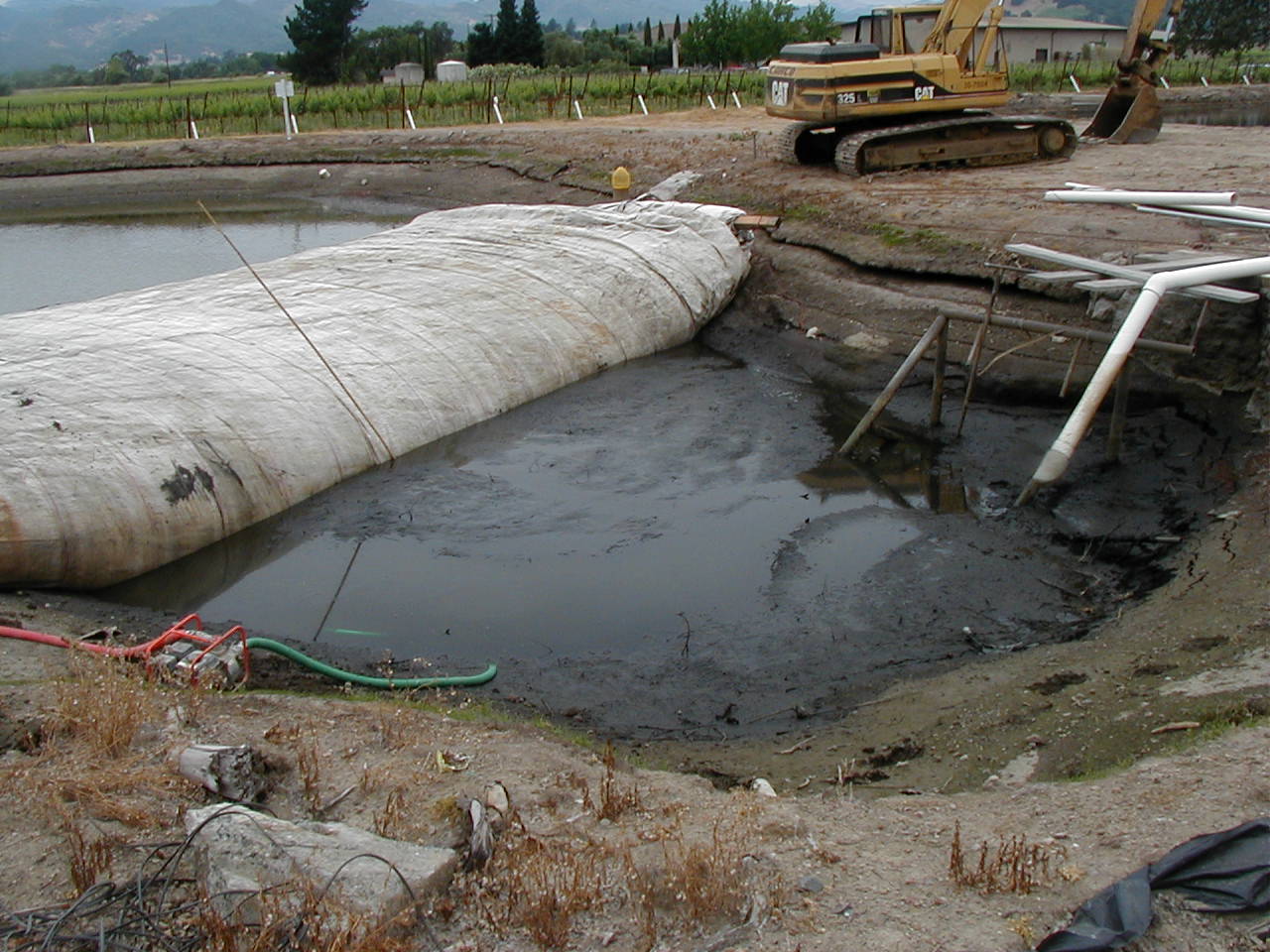
The work area is mostly dewatered and we can see the soft mud that the AquaDam® has sunk into.
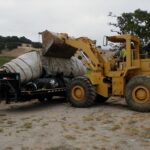
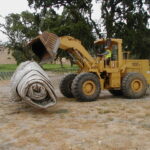
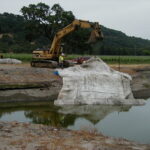
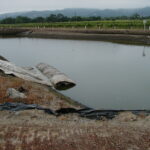
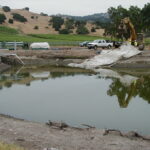
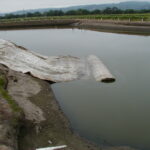

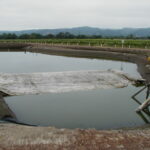
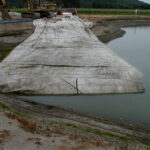
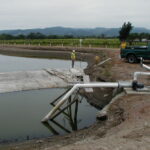
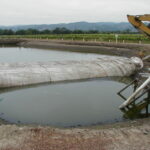
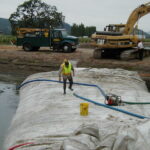
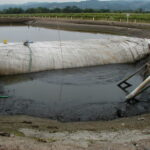
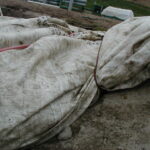
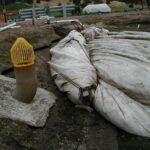
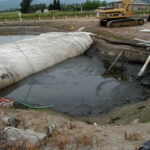
Pond, Winery Shoreline Isolation, Soft Mud
